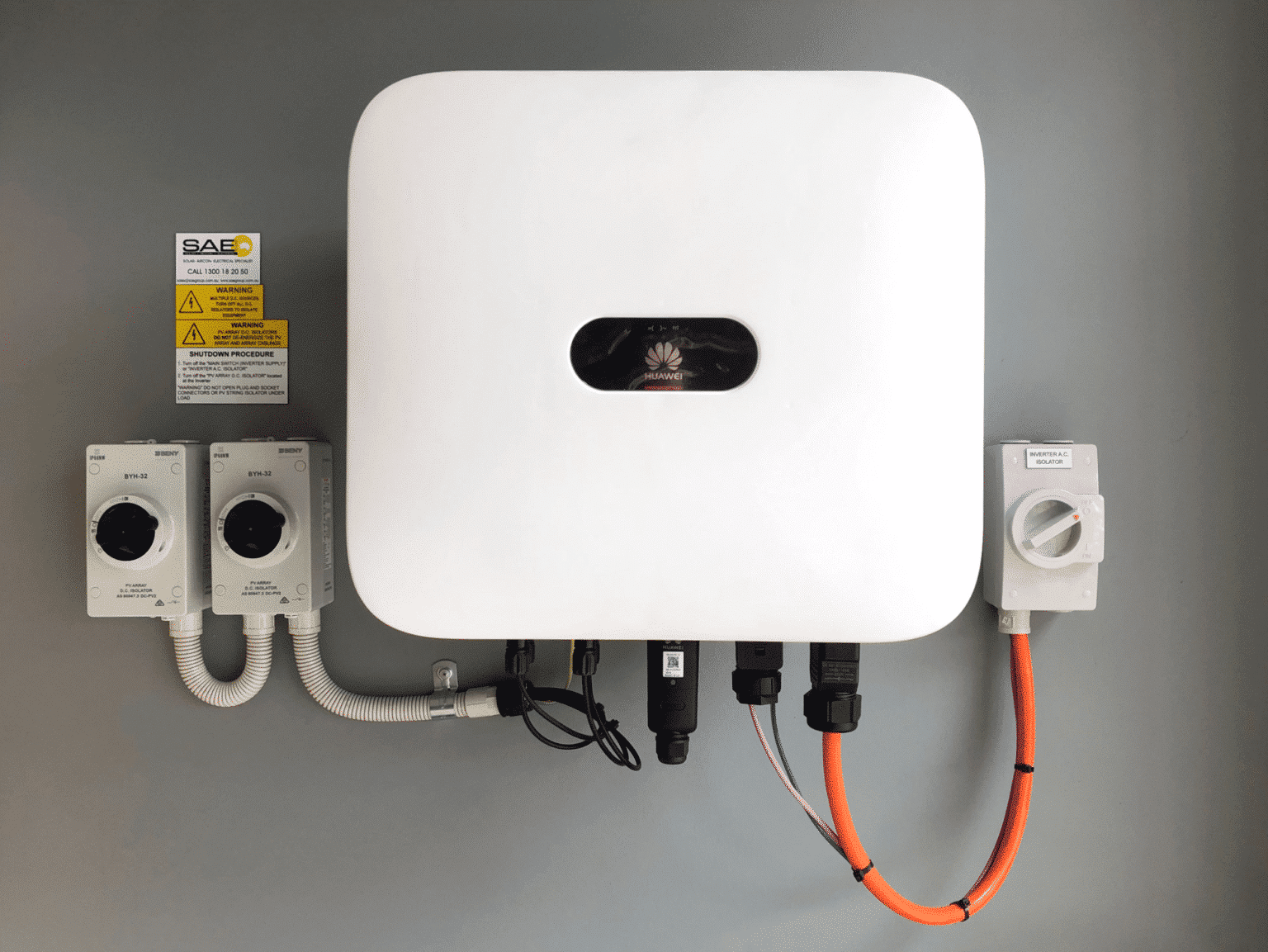
What is a solar inverter?
A solar inverter is one of the most important elements of a solar system. As solar panels produce direct current (DC) electricity that cannot be consumed by homes, an inverter comes into play. It converts DC electricity into alternating current (AC), the electricity that can be fed into your home to operate your appliances.

Inverter types
There are four main types of solar inverters available to homeowners. It’s important to understand these differences before choosing which is right for your solar system.
String inverters– This is the most common inverter option for residential use. There is usually 1 string inverter per solar installation. They are called ‘string inverters’ due to the fact that a string of solar panels is connected to them. They are also the least expensive solar inverter option. Although cost-effective, this setup can lead to reduced power production on the string in case any individual panel experiences issues, such as shading.
Microinverters – Microinverters represent the latest invention in solar inverter technology. They are very small in size and work by converting DC to AC directly on each solar panel. This feature offers more energy, especially in shady conditions. With microinverters, it is also easy to expand your solar system in the future. Every solar panel added to the solar system will need to have a microinverter installed on the back of the panel. However, microinverters are quite costly compared to string inverters.
Hybrid inverters – A hybrid inverter works the same way as a string inverter with the added functionality of feeding excess energy generated by the solar system to battery storage. Therefore, they are a good option when you are installing a solar system and think you may add battery storage in the future. Hybrid inverters are the most cost-effective way to add batteries. However, they have limited backup power capability and usually have a small delay when switching to backup mode during a blackout.
Off-grid inverters – Off-grid inverters are designed to work alone and cannot synchronize with the utility grid. They need a battery bank to function. First, your solar system feeds DC power into the batteries. Then your inverter takes that power and transforms it into AC power for your home. Many off-grid inverters include a battery charger, which is used to recharge your batteries during the winter months with a backup generator.
How to size an inverter
When choosing an inverter, make sure the characteristics of the inverter correspond to the requirements for your solar panels and the PV string, so that you won’t face overvoltage, undervoltage, and overcurrent problems.
The size of your solar inverter should generally be similar to your solar system’s DC rating. This means that if you have a 5kW solar system, you should get a 5kW (5000watts) inverter. However, you might be advised to get an undersized inverter depending on your location and climate, the orientation of your residential solar, and other factors. So, it’s always better to let the professionals size your inverter.
If you are planning to expand your solar system in the future, then you might be suggested to get an oversized inverter, but it is not generally recommended if it is significantly oversized. Also, if you want to run multiple appliances at the same time and want to make sure your inverter can handle the load, just add up the watt ratings of all the appliances that may be running simultaneously. Depending on the total watts you get, you can determine if your inverter can handle it. You can also read the tips on how to size your solar battery so that you can get the maximum out of your residential solar.